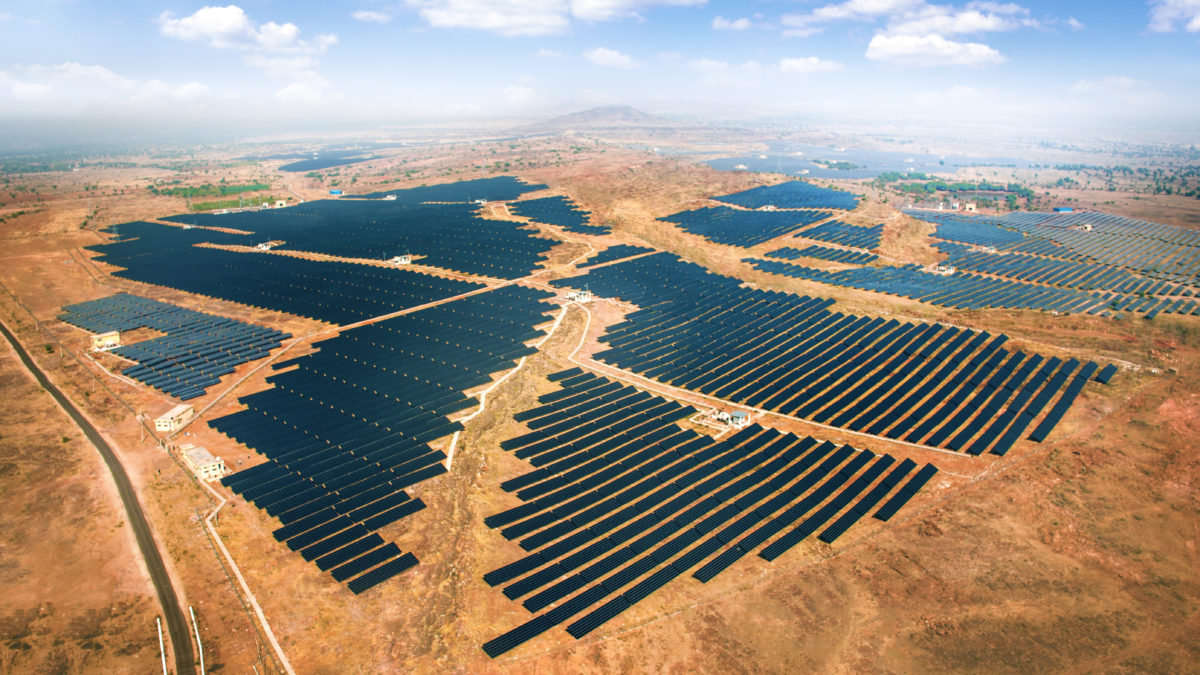From pv magazine International
Researchers from Madanapalle Institute of Technology & Science in Andhra Pradesh have proposed a new mathematical method to help solar project developers choose the best suited PV technology for plants in hot and dry climatic conditions.
The researchers claim their approach offers a simpler method of predicting PV plant output than rival software tools such as PVWatts, PVSyst and RetScreen.
The new field performance-based prediction model is based on meteorological data and laboratory-tested solar module parameters and features 24 inputs and one output. The Andhra Pradesh-based scientists experimented to determine the PV module-related input parameter needed for their model. They then analyzed 24 input meteorological parameters for hot and dry climatic conditions and performed an equation to calculate the final energy generation from a ground-mounted solar plant.
Model validation
The model was tested on two 5 MW solar plants in the district of Naguar in the Indian state of Rajasthan. One of the plants featured cadmium telluride (CdTe) solar modules and the other polycrystalline panels.
At both installations the modules were installed at a fixed tilt angle of 27 degrees, with maximum global horizontal insolation of 7.22 kWh/m2/day observed in May and a minimum, during January, of 4.15 kWh/m2/day. The research team found temperatures varied from 16.18 to 37.46 degrees Celsius.
Average annual clearness index and humidity figures were calculated as 0.61 and 44.4%, respectively, with a minimum clearness index of 0.58 in October and maximum humidity in August of 72%.
Better energy prediction
The results obtained were compared with those achieved using PVWatts software, which the researchers considered the most modern and accurate prediction tool available, as it also considers daytime temperature.
“[The] regression co-efficient between the energy prediction of [the] proposed model and actual output is 0.9516, whereas the same [was] only 0.44 using [PVWatts] for [the] multi C-si-based PV power plant,” the scientists wrote. For the CdTe facility, the first value was 0.97 and the second 0.37. “So [the] proposed model is in better confidence than the model used in [PVWatts] in predicting the energy output for hot and dry climatic [conditions] considering both multi C-si and CdTe-based PV power [plants],” the researchers added.
The error factor in energy prediction with the new model for the CdTe project varied from 0.14 to 5.52%, while that of the PVWatts software varied from 1.38 to 22.21%. At the multicrystalline facility, the error factor for annual energy generation was 0.1%, compared to 4.2% with PVWatts.
The analysis also showed, the researchers added, CdTe technology performs better than polycrystalline in hot and dry conditions.
The model is described in the paper Reliable energy prediction method for grid connected photovoltaic power plants situated in hot and dry climatic condition, published in SN Applied Sciences.
This content is protected by copyright and may not be reused. If you want to cooperate with us and would like to reuse some of our content, please contact: editors@pv-magazine.com.









By submitting this form you agree to pv magazine using your data for the purposes of publishing your comment.
Your personal data will only be disclosed or otherwise transmitted to third parties for the purposes of spam filtering or if this is necessary for technical maintenance of the website. Any other transfer to third parties will not take place unless this is justified on the basis of applicable data protection regulations or if pv magazine is legally obliged to do so.
You may revoke this consent at any time with effect for the future, in which case your personal data will be deleted immediately. Otherwise, your data will be deleted if pv magazine has processed your request or the purpose of data storage is fulfilled.
Further information on data privacy can be found in our Data Protection Policy.